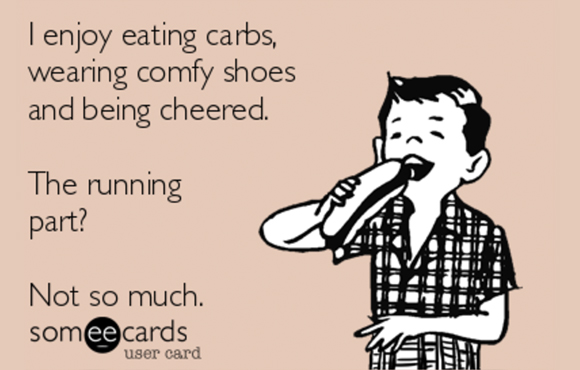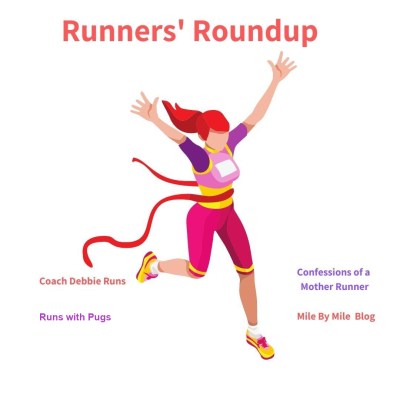Welcome new runner! You have turn out to be a component of an unique club. As a member you will experience quite a few benefits, including finding in the ideal shape of your life, a huge raise in self-self-confidence, and, best of all, multitudes of operating good friends. When you 1st fulfill these new good friends nevertheless, their functioning jargon may perhaps go away you a little bit perplexed as to what they’re really conversing about. Instance: What the heck is a fartlek? I provide you this manual to assistance you realize your managing friends. Quite soon you are going to be speaking like a working professional!
Fartlek
Even though the sound of the word may possibly make you want to giggle, Fartlek is a variety of pace instruction that is fantastic for all concentrations of managing. This means “speed play” in Swedish, Fartlek implies to increase periods of speedier functioning throughout your coaching. For illustration, on your next operate, attempt choosing up the rate a little bit, probably the length involving phone poles or for a block. Then slow down until eventually the next pole or block. Repeat a couple of periods and, voila, you have a excellent fartlek speed training.
Bandit
A bandit is a thief and that is precisely what a bandit runner is, another person who did not pay for a race nevertheless sneaks in, thieving race positive aspects like cleared roadways and h2o/gasoline stations that you paid out for.
Chafing
Ever get rubbed the erroneous way? In the functioning jargon globe chafing is what comes about when fabric or skin actually rubs you the mistaken way until the pores and skin is broken and you acquire a painful abrasion (that in all probability will not seriously make by itself known until eventually you hop in the shower). It tends to happen additional regularly in warmer weather conditions and targets spots like arms, between thighs, beneath the breasts, and certainly, even nipples. Items like System Glide (<– affiliate link) can help prevent chafing.
Hitting the Wall
This term is usually used for marathons or other long-distance races. It happens when you literally run out of gas (fuel) in the later miles of a race. Dehydration and undertraining are other possible causes of hitting the wall. You may feel like you can’t take another step, your brain may feel like it’s not functioning, and the need to slow down or stop may feel overwhelming.
Bonking
See “Hitting the Wall.”
Carbo-loading
The practice of eating a high-carbohydrate meal the night before a long race. One of the goals of carbo-loading is to avoid hitting the wall. There are many theories of race fueling these days and most proponents of carbo-loading suggest a diet that is fairly high in carbohydrates throughout training and leading up to your race. 
Pronation
Pronation happens when your foot rolls inward as you stride. This is actually a natural movement, the problem happens with over-pronation and can lead to knee and foot pain. There are some things you can do to help this including taping, exercise, and wearing the right shoe type. Check with your doctor, chiropractor, or shoe guy for tips.
Negative Splits
This term is usually used when the second half of your run is faster than the first. As in “I started off slow and picked it up for the last few miles and had a negative split in my 10k!” It can also be used to refer to intervals that are run at a faster pace as you go through your workout.
Intervals
Frequently done on a track, intervals (or repeats) are shorter (200-800m) fast bursts that are done at a high-intensity level. They are great for improving form, leg turnover, speed, and VO2 Max. They are sandwiched between slower-paced recovery periods.
VO2 Max
VO2 Max stands for maximal oxygen uptake and is a measurement of the maximum amount of oxygen a person can use during intense exercise. It is a measure of a person’s aerobic endurance. While much of a high VO2 Max is genetic, it can be improved through interval training and other high-intensity exercises. It can be measured in a lab (I had it done a few years ago) for the most accurate measurement, but these days, some fitness trackers and watches can also measure it (though not as accurately).
Strides (or Striders)
Strides are short (50 to 150m) bursts of running done at close to maximum effort level. They’re great for improving your leg turnover and overall running form. These are usually done a couple of times a week at the end of an easy workout. They can also be done before a speed workout or race. You can perform six-eight at the end of your run, focusing on turnover and form, then recovering completely before the next stride. They can be done barefoot if you have a safe place to run.
Taper
A taper is a period of time, generally one to three weeks, before a long race when a runner gradually tapers down their distance and intensity. Race training is hard and takes a toll on the body. The taper is designed to help you recover fully without losing fitness before your race.
Tempo
A Tempo run is another form of speed training that is done with a little less intensity than interval training. Tempo runs are usually run on the road at a pace that you can sustain for about an hour or slightly more. A simple type of tempo run would be to warm up for 10-15 minutes at an easy pace, pick up the pace for 20-30 minutes, then finish your run at an easy pace.
Jogging
A term most commonly used by your co-workers or your mom. When they see you walk in the door they will ask “how was your jog today?” They will ask it after you’ve spent an hour sweating your butt off doing a tempo run. Let me make it clear. Whether you’re fast or slow, when you run, you are a runner.
Plogging
Runners generally like to be good citizens and Plogging is a way that runners can give back to their neighborhood. Combining the Swedish words plocka upp (pick up) and jogga (jog) gives us the verb plogga and the English equivalent plogging. It means picking up litter while jogging (yes, ignore what I said in the previous paragraph). Runners frequently get together to plog on Earth Day.
Running Acronyms
Runners, like the military, love acronyms! If you don’t know what they mean it can leave you feeling out of the loop. Here’s a list of a few of the most common running jargon acronyms.
PR
Personal Record. This is a runner’s all-time best time in a certain race distance. 
PB
Personal Best. Some runners use this term interchangeably with PR.
CR
Course record. Since some races change their route over time, a course record is the best time on a certain course.
WR
World Record. This is the best time in the world at a given distance.
DNF
Did not finish. This is your sad designation if for whatever reason you did not finish the race. I personally have two DNFs, both in the San Diego Rock ‘n’ Roll Marathon (years ago).
DNS
Did not start. Whether it’s an injury, the weather or your car broke down on the way to the race, this is a race you signed up for and did not toe the line at the start.
DFL
Dead f**king last. Sometimes nicely called dead freaking last, this is the person who is the last to cross the finish line. They deserve a lot of kudos because they hung in there and resisted any urge to DNF.
DOMS
Delayed Onset Muscle Soreness. You may feel this the day or two after a tough workout, whether running or strength training.
BQ
Boston Qualified (or Qualifier). This is a high standard for runners who want to run the Boston Marathon which has a qualifying time that runners must meet. A Boston Qualifier is a race that is certified to do this. Some races will advertise themselves based on the number of participants who qualify each year.
LSD
Long Slow Distance. This term takes on a whole new meeting when you’re a runner. The idea when you are building your endurance is to run long runs at a slow pace.
LT
Lactate Threshold. In running this is the pace at which lactate starts to build up in the blood forcing a runner to slow down. Improving your lactate threshold can help improve your stamina allowing you to run faster for a longer period of time. Tempo runs are a great way to improve your lactate threshold.
MP or HMP
Marathon Pace or Half Marathon Pace. Either the planned pace at which you want to run your race or a training run with those paces as a goal.
ITB
Iliotibial Band (or IT Band). The ITB is a strip of thick fascial tissue that runs from the hip to below the knee. Keeping it healthy through stretching and foam rolling, and avoiding overuse is key because it can cause inflammation anywhere along that fascial line. Is your head reeling yet? I hope not and I hope that you feel you have a grasp on the mysterious language that is runner talk. If you have another term you’ve heard go ahead and ask in the comments. And to experienced runners, did I forget anything?
And Now It’s Time for the Runners Roundup!

Linkup with the #RunnersRoundup with @DeborahBrooks14, @milebymilerun, @runningwithpugs, and me! Bring your best #runningrelated posts, find new blogs to follow, and share your love of #running! Click To Tweet
Weekly Linkups
My weekly linkups! Please stop by and check out all of the great recipes, workouts, and information that all these awesome bloggers share every week!
Tuesday Topics with Kim and Zenaida The Runners’ Roundup with Deborah, Lisa, Jenn, and Me! The Weekly Run Down with Deborah and Kim Fit Five Friday with Darlene, Michelle, Renee, Jenn, and Zenaida Ultimate Coffee Date with Deborah and Coco


